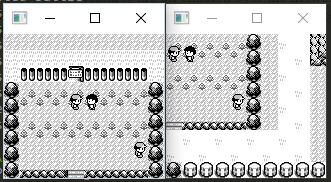Bitcoin, and blockchains in general, threaten a government's ability to enact monetary policy. This creates a rift between bitcoin and governments that will likely prevent its universal adoption in its current form. However, we can take the advantages of a blockchain and modify them in a way to create a government sanctioned and controlled blockchain that is still, to a degree, distributed and takes advantage of the efficiency of a digital and secure currency.
A government sanctioned blockchain based currency would need to have the government act as a central authority. What this means is that the government entity would be able to modify the rules of the blockchain to allow it to control the money supply, invalidate/reverse transactions, assign addresses to users, and possibly other ways.
A central authority would have access to private keys that would assert its identity. Using these keys, it could sign certain actions (special transactions) that would be recorded in the blockchain. For example, a government signed transaction could generate coins with no proof of work required (unlike how it is traditionally created through mining blocks). This would allow the government to "print money". Additionally, transactions signed by this authority could remove coins from an address, effectively erasing coins. Also, it could use its authority to possibly grant each citizen an address(es) that it approves of, tying that citizen to an address for tax purposes or other reasons.
Another powerful tool would be the ability to reverse transactions. Addresses of known criminals, or those who owe money to the government, could have their coins forcefully removed/garnished from their addresses. An advantage of this is that if someone was ordered to pay an amount, they could simply send the agreed amount to the recipient's address, proving publicly they paid the debt owed. This would also allow the government the ability to track transactions, monitor fraud/laundering, etc.
Several technical challenges exist with this setup. A single private key owned by the government would be susceptible to a rogue employee effectively destroying the economy if he had access to the key (as it could print money and take money from anyone). Actions signed by the central authority would have to be distributed across multiple agencies, where all agencies would be required to sign the action/transaction before it would be acknowledged and added to the blockchain. Additionally, the government entity would need to be able to revoke and grant keys. Perhaps only require a majority signed for a transaction (to avoid the issue of one lost key preventing the government from being able operate the blockchain).
The government entity would need to provide a significant amount of the mining power for the blockchain. It would need to in order to prevent attacks by foreign governments, and to assert the reliability and secureness of its digital currency. To encourage mining by the public, the government entity could arbitrarily control both the transaction fees and reward for mining a block. Since the govnerment entity provides a large portion of the mining power for the blockchain, it could pick up slack when temporarily lowering block rewards and fees it would accept. The large amount of mining power provided would also allow the government to prioritize government signed transactions. As an alernative, the government entity could require that all blocks mined are securely sent to a government controlled service that inspects the node, signs it, which allows it to be added to the blockchain. This would prevent the 51% attack unless the attacker also had access to the private keys required to sign off in this manner.
An additional advantage of a central authority running a blockchain is that it would adapt very quickly to technical challenges. Things like controlling how often a block is created (to increase verification speed), how large a block is (to control the number of transactions verified in a given time span), control the block reward to control inflation, and even adopting new standards to modify how the blockchain fundamentally operates.
Blockchain based currency is still in its infancy stages and still needs time and heavy research to determine how to be utilized in a way beneficial to a government and its peoples, but the above are possible solutions to this problem that will allow a government to adopt a digital currency in a secure yet controlled manner.











